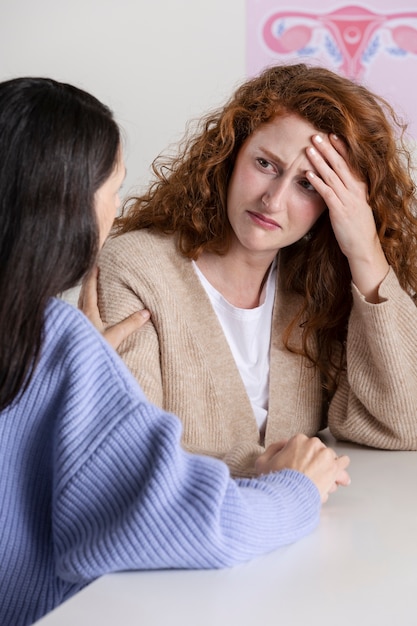
Symptoms of perimenopause, which leads up to menopause, can start as early as 15 years before menopause itself. On World Perimenopause Day, London GP Dr. Deyo Famuboni highlights ten common symptoms of perimenopause to be aware of.
If you’ve been having regular periods for the past five to ten years and suddenly notice it’s late, your first thought might be, “Am I pregnant?” If you have a reliable contraceptive and a pregnancy test comes back negative but your period eventually arrives, you might be entering perimenopause. This natural phase marks the transition to menopause, leading to permanent infertility.
In the UK, the average age for menopause is around 52, but perimenopause can start in the early forties, and sometimes even in the mid-thirties. Changes in female hormones, mainly estrogen, occur unevenly during this time.
Perimenopause itself shouldn’t cause alarm. Lifestyle changes can greatly help manage symptoms. Regular exercise and a diet rich in phytoestrogens—such as soybeans, dark leafy greens, and cruciferous vegetables like broccoli—are beneficial. If perimenopause symptoms affect your quality of life, consult your doctor for further tests or medical treatments, including hormone replacement or non-hormonal options.
Hormonal changes during perimenopause affect your ovaries’ egg release, leading to periods that are longer, shorter, or absent for a few months. Periods absent for three months or more, or very heavy periods, especially with tiredness or breathlessness, should prompt a visit to your doctor, particularly if you’re under 40.
Hot flashes and night sweats are common and can vary widely in duration and intensity, often causing sleep disturbances. Wearing breathable clothing, staying hydrated, and avoiding triggers such as excess weight, alcohol, caffeine, spicy foods, and certain medications can help alleviate symptoms.
Mood swings, irritability, short-temperedness, and anxiety can also occur due to fluctuating hormone levels and poor sleep quality. Maintaining regular exercise and a healthy diet to stabilize blood sugar levels can be beneficial.
Changes in hormones can decrease the vaginal wall’s fluid production and elasticity, making some women feel discomfort, especially during intercourse. The time required for arousal increases with age, but using vaginal lubricants can help.
Women are generally more prone to urinary infections due to their anatomy. This risk may increase during perimenopause, causing frequent or painful urination and a decreased ability to hold urine. Preventative measures include urinating after intercourse, using lubricants, and doing pelvic floor exercises.
Fertility issues may arise as ovulation decreases. While it can take up to a year to conceive naturally, if you are in your late thirties or early forties and struggling to conceive, seeking medical advice sooner is important. Contraception should still be used until 12 months after your last period if you don’t wish to become pregnant.
As estrogen levels drop, the body’s ability to replace bone diminishes, affecting ligaments and cartilages and potentially leading to osteoarthritis. Bone thinning due to osteoporosis can cause aches and pains, so ensuring adequate calcium, vitamin D, and exercise is crucial. While some women report relief from joint pain with glucosamine, evidence supporting its effectiveness is limited.
Various factors contribute to weight gain during perimenopause, including a slower metabolism and reduced muscle building, as well as stress from sleep loss and other symptoms. Elevated stress levels can increase cortisol, leading to weight gain around the middle. Managing the underlying stress through regular exercise and a balanced diet can help counteract this.
A sudden weight increase should prompt a doctor’s visit, as declining estrogen levels can raise cholesterol and blood sugar levels, and stiffen heart and blood vessels, increasing the risk of heart disease. Left-sided chest discomfort during exertion requires immediate medical attention.

